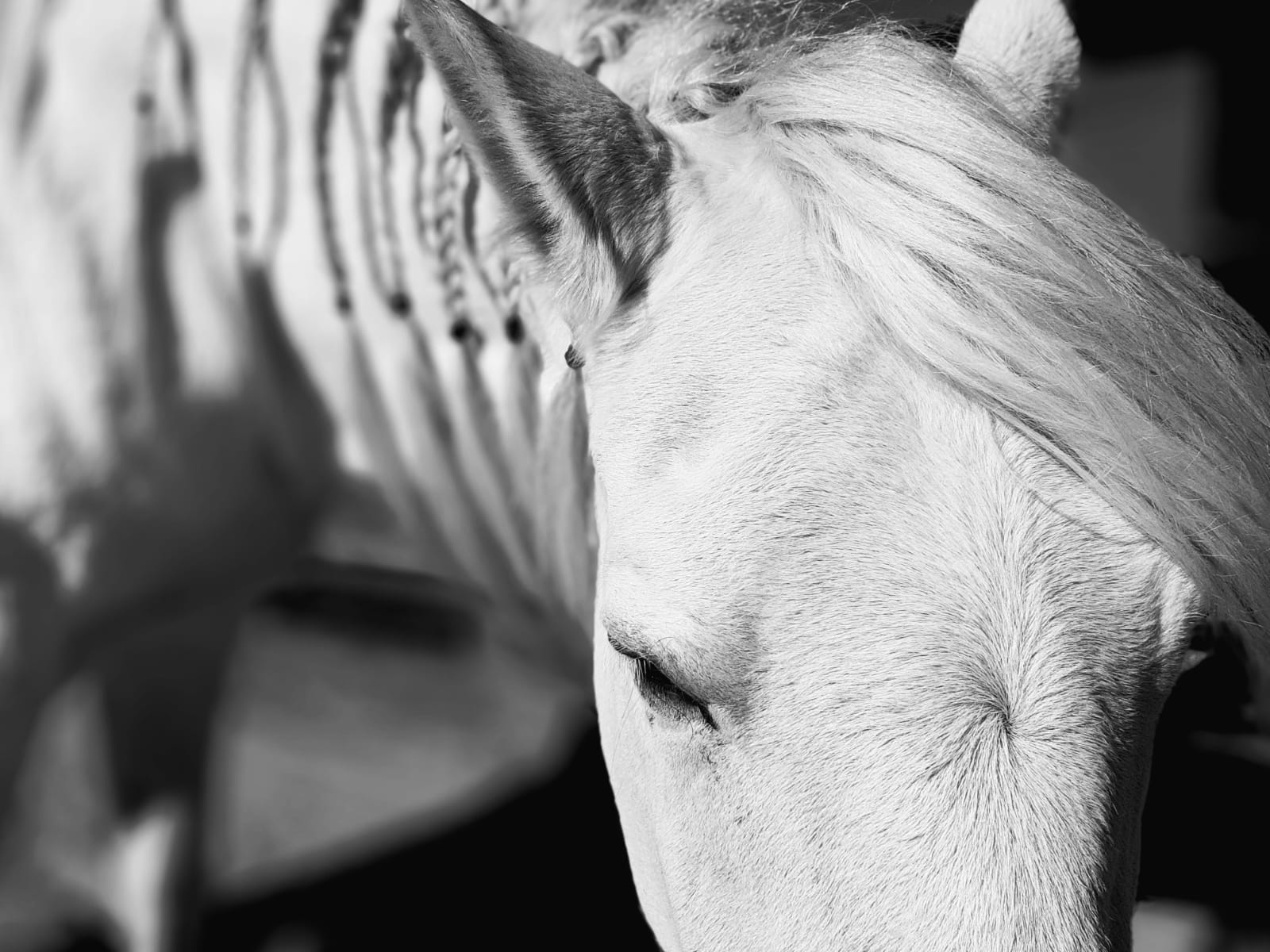In nature horses live and travel together as a group and are more likely to survive as a herd. As prey animals they are targeted by predators and it is their instinct to run away from potential threats. It is a natural process that weaker and slower animals will end up at the periphery of the group, fall behind and have less chances to survive. Simply put, horses have learned to ignore pain in order to keep up with the rest of the herd. We as humans have to remember that horses evolved to be excellent in masking pain. Those stoic animals have mastered their ability to hide their vulnerabilities in order to survive.
Horses are a magical combination of power, personality and intuition. No wonder we are so fascinated by their presence. They easily sense and feel our energy, they pick up on our emotions and even read our intents. We have to be fully present, leave our dramas at the door and take a deep breath before we interact with them. This is the only way to build a respectful and satisfying relationship with a horse. Maybe more horse enthusiasts should start a daily meditation practice!
We on the other hand have a much harder time reading the wellbeing of our horse. We are focused on words but horses use subtler forms of communication. They are giving us the opportunity to learn to observe and listen with all our senses. If we cannot see their needs and pains in early stages, they might be forced to communicate their discomfort more loudly through actions. They put their ears back when we approach, they try to bite us when we touch certain parts of their body or they even try to kick us when we address the wrong spots too fast and too thoughtless. Horses displaying these actions are often labeled as mean, nasty, grumpy, disrespectful or rebellious. I heard Mark Rashid say in a podcast that horses cannot distinguish between the way they feel and the way they act. They just react and do not intentionally try to do things to us. We tend to assign human motivation and emotions to our horses but the horse’s world is way simpler. Horses go the path of least resistance – they try to preserve energy and are always looking for peace and comfort so they can feel safe.
We need to aim for a deeper level of understanding and not just look at a horse through a humanized filter. A horse that can barely walk a straight line, has a hard time placing its hind feet, holds his head at an angle and refuses to do anything faster than a slow walk, might not just be lazy or stubborn! It probably is in a lot of pain. Like us humans, horses have very different pain thresholds and some are more sensitive than others. Although they may not scream it out loud, horses do display subtle signs when they are in pain. It is our responsibility to learn to see and recognize early signs of discomfort so we can stop creating more pain and start making the right decisions to help the horse heal. Pain is just a sensation that motivates us to protect the body from physical harm. Horses need our help to do so.
I have taken many classes to learn to pay attention to those subtle signs of imbalances and I trained my palpation skills over the last 20 years by working on the human body. I use my observation skills and my intuition to find the original cause of a health issue with the goal to obtain long lasting effects and results with my treatments. I prefer to see with my hands and to listen with my heart.
It is fascinating to tune into a horses extremely sensitive nervous systems and it is gratifying to bring my calm and focused energy into the treatment so horses can fully trust, relax and heal. I love the idea to bring more awareness to rider and horse and to help them understand each other better. Animals do speak, but only to those who know how to listen.

